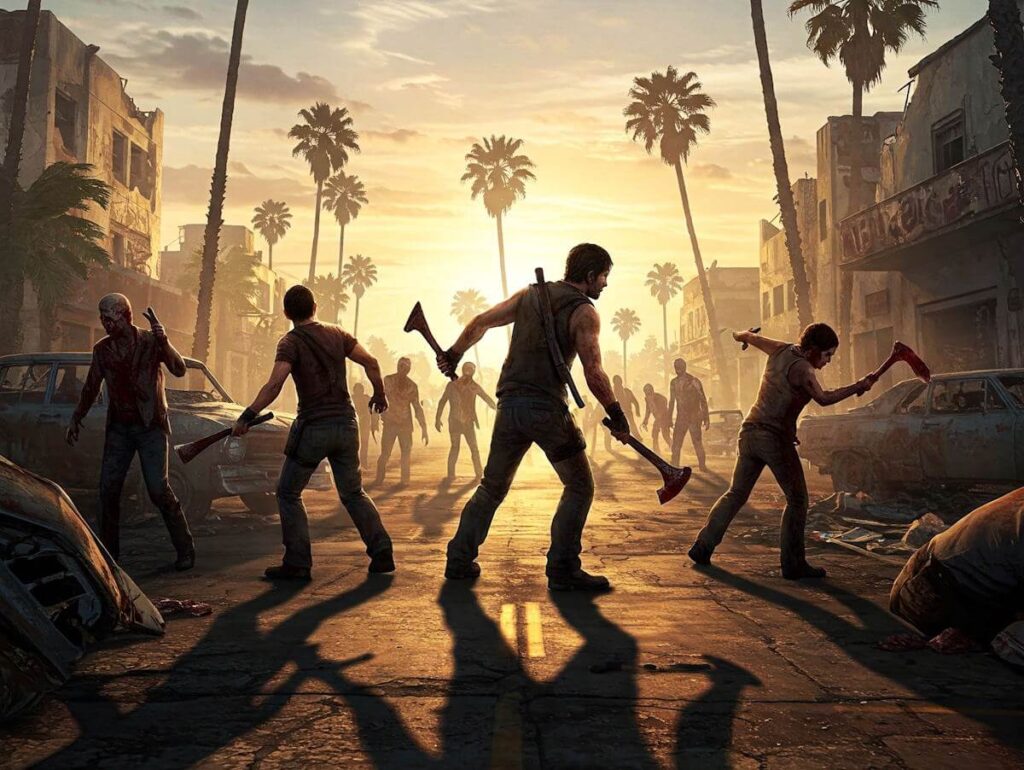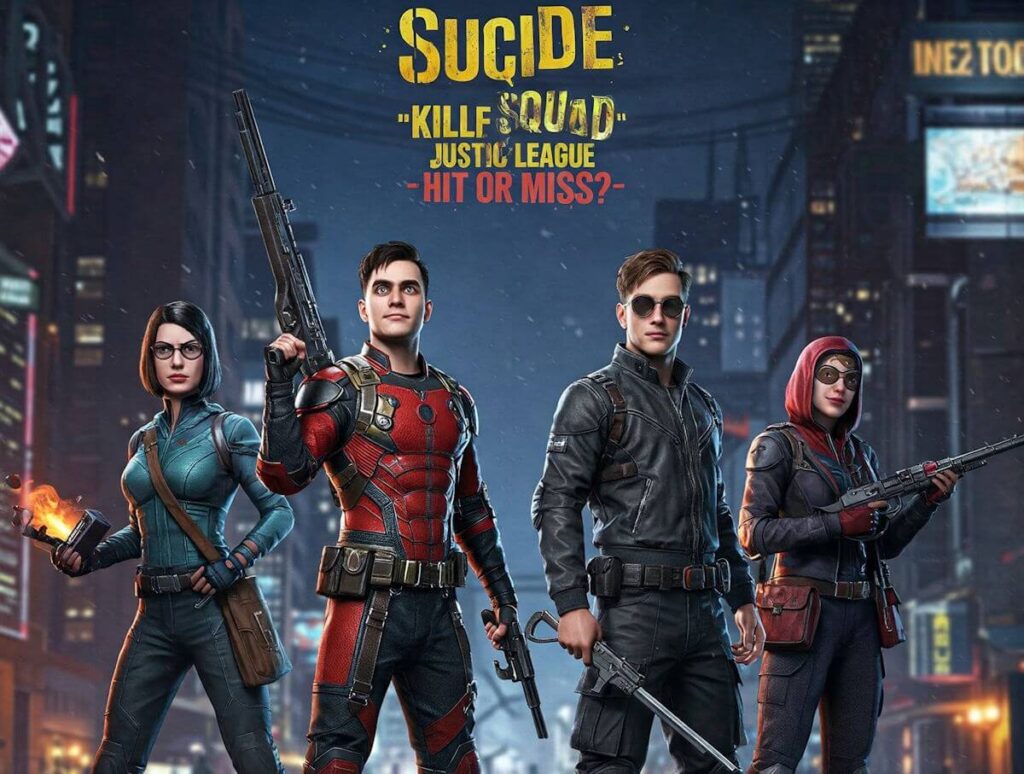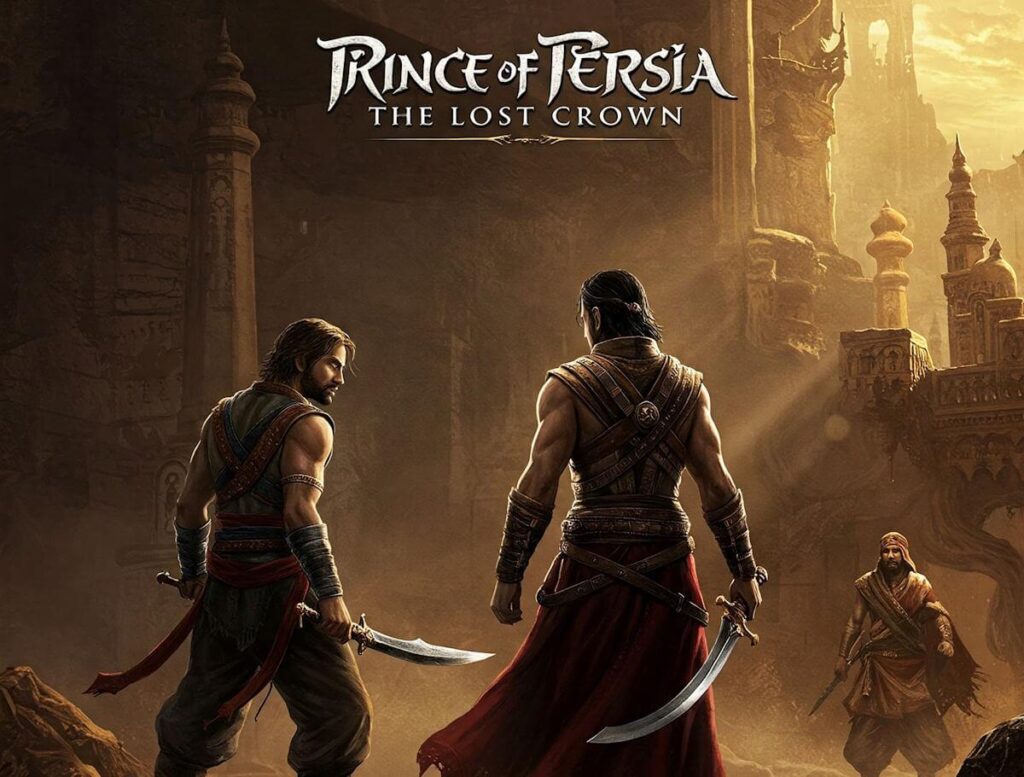Dead Island 2 serves as a sequel to the widely recognized title of the same name, set against the backdrop of a zombie-infested Los Angeles. This much-anticipated installment is significant within the gaming community, embodying the enduring struggle against hordes of the undead while weaving a narrative rich in humor and horror. The game reintroduces players to an expansive open world, one that captures the vibrant atmosphere of Los Angeles, albeit through a post-apocalyptic lens.
Since its initial announcement, Dead Island 2 has generated substantial hype, owing partly to its predecessors’ mix of engaging gameplay and distinctive tone. Players can expect a dynamic experience rich in exploration, crafting, and combat, all while maintaining the series’ unique approach to zombie culture. The setting plays a vital role in shaping the player experience, offering a diverse range of environments—from the sunny beaches to the shadowy back alleys—where survival and creativity are put to the test.
The development of Dead Island 2 has not been without its challenges, including multiple shifts in development teams and release schedules that have extended the anticipation amongst fans. This prolonged wait has only heightened expectations, with the gaming community eager to see how the new installment will expand upon the original’s mechanics and narrative depth. As players return to this world of chaos, they are hopeful for an experience that not only honors its legacy but also delivers fresh innovations.
Ultimately, Dead Island 2 stands as a testament to the franchise’s potential for growth, exploration of new themes, and contribution to the vibrant zombie survival genre. With the hope of delivering an experience that resonates deeply with its audience, the game positions itself as a noteworthy addition to the gaming landscape.
The Development Journey
Dead Island 2 has been marked by a tumultuous development history characterized by numerous delays and changes in the development team. Initially announced in 2014 by Deep Silver, the game was met with excitement following the success of its predecessor. However, the journey to its release has not been smooth, as the project has experienced significant upheavals and setbacks over the years. One notable point in this journey was the shift in development teams. Originally developed by Yager Development, the project was handed over to Sumo Digital in 2016, following disagreements over the creative direction of the game. This transition led to further delays, as Sumo had to re-envision elements already in progress, ultimately impacting the timeline for completion.
The game has also faced challenges related to maintaining momentum within both the development team and among players. As years passed without substantial updates or a clear release date, anticipation turned to skepticism among fans. The prolonged silence raised questions about the viability of the project and whether it would ever see the light of day. Many gamers expressed concerns that Dead Island 2 might fall into the category of the “cursed” games, where prolonged development leads to eventual cancellation or subpar results. Nevertheless, occasional updates and teasers from the developers have sought to reassure fans, sparking renewed hope. With continual assurances of progress, the expectation surrounding Dead Island 2 has reached a fever pitch, setting the stage for a potentially big comeback.
Despite the complications, the enduring interest in Dead Island 2 reflects its unique premise and legacy. Fans remain eager to see how the game will integrate its predecessor’s elements while forging new paths in gameplay mechanics and storytelling. The anticipation continues to build, feeding discussions around whether the game will ultimately meet, exceed, or fall short of the lofty expectations that have accumulated over a decade.
Gameplay Mechanics and Features
Dead Island 2 brings a renewed sense of excitement to its gameplay mechanics and features, successfully merging familiar elements from the original with innovative additions that cater to both veteran players and newcomers alike. The combat system remains at the forefront, emphasizing visceral melee engagements complemented by a variety of ranged weapon options. Players can wield an array of improvised weapons, customized to enhance damage output or introduce unique characteristics, creating an engaging combat experience that is both satisfying and strategic.
Open-world exploration is another pillar of Dead Island 2’s gameplay. The game is set in a vibrant, sun-soaked California, with an expansive environment that encourages players to explore diverse locations filled with hidden treasures and dangerous adversaries. Dynamic events and side quests are seamlessly integrated, allowing players to discover lore and character backstories while necessitating tactical approaches to combat. This fosters a sense of immersion as players navigate the intricacies of post-apocalyptic landscapes filled with both dangers and discoveries.
Crafting elements play a crucial role, allowing players to collect resources and create unique weaponry. The crafting system is designed to be intuitive yet deep, enabling extensive personalization of weapons not only in terms of aesthetics, but functionality as well. This adds another layer of strategy as players customize their arsenal to tackle different threats, adapting to the evolving challenge of the game. Furthermore, character customization enhances player engagement, enabling individuals to modify appearances and skill sets, tailoring the gaming experience to their preferred playstyle.
Ultimately, Dead Island 2 retains the essence of its predecessor while introducing fresh mechanics, crafting elements, and exploration opportunities. These enhancements elevate the gameplay, allowing for a rich, immersive experience that promises to captivate audiences as they navigate the chaotic and thrilling world of the game.
Visuals and Design Aesthetics
Dead Island 2 showcases a remarkable evolution in visual presentation compared to its predecessors and similar titles within the zombie genre. The game employs a vibrant art style that contrasts sharply with the anticipated bleakness typical of survival horror games. This artistic choice emphasizes a hyper-realistic yet stylized aesthetic, captivating players with its colorful environments and character designs. The attention to detail in the graphics quality serves to immerse players in a post-apocalyptic world that feels both recognizable and unique.
The game world is rich with diverse landscapes, from sun-soaked beaches to urban ruins, enhancing the overall atmosphere and gameplay experience. Each environment is meticulously crafted, showcasing not just visual fidelity, but also an interactive ecosystem that enriches player engagement. Lighting effects and dynamic weather systems further embellish these settings, elevating the overall immersion. This dedication to design aesthetics creates a vivid contrast against the gruesome zombie encounters, highlighting the tension and unpredictability inherent in survival situations.
When compared to earlier installments of the Dead Island series, the graphical upgrades in Dead Island 2 are profoundly notable. The more refined textures, improved animations, and advanced particle effects contribute to a sense of realism that enhances the horror-survival experience. Furthermore, positioning this title alongside other zombie-themed games reveals Dead Island 2’s commitment to standing out in a saturated market. With a unique visual palette and design ethos, it distinguishes itself, attracting both returning fans and new players alike.
Overall, Dead Island 2’s visuals and design aesthetics effectively capture the essence of a vibrant yet dangerous world, setting a new benchmark for future entries in the series while offering a fresh perspective on the zombie apocalypse narrative.
Sound and Music Elements
The audio landscape in Dead Island 2 plays a crucial role in defining the overall gaming experience. Sound design serves as a foundational element, immersing players into the chaotic environment of the game. From the distant growls of zombies to the unsettling noises of a deserted city, every audio cue is meticulously crafted to evoke tension and suspense. Each sound effect not only enhances the horror atmosphere but also intertwines with the gameplay mechanics, allowing players to gauge the presence of threats and decide their next moves accordingly.
Moreover, voice acting in Dead Island 2 delivers not just narrative context but also contributes to character development and emotional engagement. The performances by voice actors bring life to the protagonists and antagonists, infusing their personalities and backgrounds into dialogues that resonate with players. This aspect of voice work is particularly vital in a game where humor is often juxtaposed with horror; the delivery of lines can either amplify a moment of levity or heighten the tension, thus creating a balance that keeps players engaged.
The soundtrack of Dead Island 2 also warrants attention, as it enhances the overall ambiance. The choice of music, with its varied styles and themes, aligns with the transitions between gameplay segments, switching from eerie tracks during tense encounters to more upbeat tunes in lighter scenarios. This variety not only supports the gameplay dynamically but also enriches the narrative experience. Overall, the careful integration of sound design, voice acting, and music in Dead Island 2 significantly amplifies its immersive qualities, making the lengthy wait for the game’s release worthwhile for fans eager to experience this unique auditory adventure.
Community Reactions and Expectations
The release of Dead Island 2 has sparked a variety of reactions within the gaming community, reflecting a mixture of excitement and apprehension. Anticipation had been building over the years, as the game’s initial announcement in 2014 set high expectations for both its gameplay and narrative depth. Numerous trailers and gameplay demos were released during the lead-up to the launch, generating buzz and setting a benchmark for what players hoped to experience.
Upon its release, critics received Dead Island 2 with a generally favorable outlook. Reviews highlighted the game’s engaging combat mechanics, rich environments, and the humor infused throughout its storyline. Many players expressed satisfaction with the creative approach to zombie encounters, praising the diversity of weapons and character abilities. The evolving nature of gameplay further captivated audiences, as players found themselves immersed in a vibrant, albeit chaotic world that remained true to the franchise’s roots.
However, the reception was not universally positive. Some players voiced disappointment, particularly regarding certain technical issues that surfaced post-launch, such as lagging graphics and minor bugs. This feedback has spurred discussions about the gap between player expectations and the final product delivered. While some believed the game lived up to its promise, others felt that certain aspects could have been refined further.
Key themes emanating from community discussions revolve around the balance between nostalgia for the original game and the desire for innovation in gaming mechanics. Overall, opinions on Dead Island 2 reveal a diverse and multifaceted landscape of expectations and experiences, showcasing the complex relationship between developers and their audience in the modern gaming era.
Comparing to Other Zombie Games
The gaming landscape is filled with a multitude of zombie-themed titles, each presenting unique mechanics and storytelling approaches. In the time leading up to Dead Island 2, numerous games in this genre have made their mark. Titles such as Resident Evil, Dying Light, and Left 4 Dead have set high standards, distinguishing themselves with engaging narrative arcs, innovative gameplay, and immersive atmospheres. This analysis will explore how Dead Island 2 aligns with and diverges from these established franchises.
One of the most notable aspects of Dead Island 2 is its emphasis on cooperative gameplay. While games like Left 4 Dead prioritize teamwork and player-to-player interaction, Dead Island 2 enhances this with a vibrant open-world environment that encourages exploration and individual play styles. Players can tackle challenges in diverse ways, whether through stealth, brute force, or crafting unique weaponry, adding a level of versatility often not present in more linear zombie shooters.
Another compelling feature is Dead Island 2’s approach to humor and outrageousness amidst the horror. While Resident Evil leans towards intense, suspenseful scenarios, Dead Island 2 incorporates a more lighthearted tone. This sets it apart in a crowded market often dominated by darker themes. The game promises a blend of striking visuals and frenetic combat, rooted in a both eerie and entertaining zombie apocalypse, which differentiates it from its contemporaries.
Moreover, while Dying Light introduced innovative parkour mechanics, Dead Island 2 focuses on an engaging crafting system and character development traits. This emphasis on customization fosters deeper gameplay engagement, appealing to players seeking a more personalized experience in their battle against the undead. Overall, Dead Island 2 harnesses key features of other notable games while establishing its unique voice, solidifying its position in the ever-evolving realm of zombie games.
Long-Term Replayability
One of the crucial aspects of engaging video games is their long-term replayability, a quality that can significantly enhance the overall gaming experience. In the case of Dead Island 2, various elements contribute to its potential to keep players returning long after the initial playthrough. Central to this are the side quests sprinkled throughout the game. These quests not only provide additional challenges but also explore different narratives, encouraging players to delve deeper into the game’s world. The variety of side missions ensures that players have distinct experiences each time they replay, aligning with the game’s premise of survival amidst a zombie apocalypse.
Moreover, cooperative play is another feature that enhances long-term engagement. Playing alongside friends or other players amplifies the excitement and introduces new strategies for tackling challenges. The dynamics of cooperative gameplay allow for shared experiences, making each session unique. This social dimension can contribute significantly to the game’s replayability, as team-based coordination offers new ways to approach every quest and enemy encounter.
Character choices also play a pivotal role in the replayability of Dead Island 2. With several characters each possessing unique skills and backgrounds, players can tailor their gameplay experience by opting for different heroes during subsequent playthroughs. This diversification empowers gamers to experiment with varied combat styles and strategies, thereby sustaining their interest over time. Additionally, the developers have committed to releasing regular updates and downloadable content, which promise to introduce fresh challenges, new locales, and enhanced gameplay features. Updates can significantly refresh player interest, as they provide reasons to dive back into the game.
Through its mix of side quests, cooperative gameplay, character customization, and ongoing updates, Dead Island 2 appears to offer considerable long-term replayability. These elements not only enrich the experience of the first playthrough but also provide compelling reasons for players to revisit the game, thus extending its lifespan in the competitive landscape of gaming.
Conclusion: Was it Worth the Wait?
The long-anticipated release of Dead Island 2 has sparked considerable debate among gamers and critics alike. After years of development and numerous delays, the question remains: does the game deliver on the promise of a thrilling zombie survival experience? Upon examining the various aspects of the game, it is clear that there are both commendable features and notable shortcomings that contribute to the final verdict.
One of the standout elements of Dead Island 2 is its immersive and vibrant open-world setting. Players are greeted with a diverse environment that feels alive and dynamic, which certainly adds to the overall enjoyment. The graphics are visually striking, showcasing the developers’ commitment to creating an engaging atmosphere. Additionally, the game’s combat mechanics have been highlighted as a strong point, offering a visceral and satisfying experience that is both accessible to newcomers and rewarding for seasoned players. These positive elements contribute to a foundation that many have been eagerly anticipating.
However, the game is not without its downsides. Critics have pointed out that despite the engaging gameplay, there are moments of repetitiveness, particularly in missions and enemy encounters, which may detract from the overall experience. Furthermore, some technical issues were reported, indicating that the extended development time may not have fully resolved certain lingering problems.
In conclusion, while Dead Island 2 presents an engaging world and enjoyable gameplay, the reality of its execution leaves room for improvement. Fans of the franchise may find that the game satisfies their cravings, but the question of whether it was worth the long wait largely depends on individual expectations. As the gaming landscape continues to evolve, it is anticipated that Dead Island 2 will steadily carve out its place within gaming culture, drawing both criticism and praise along the way.




